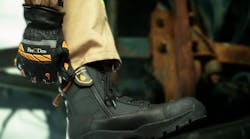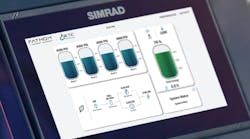The American Firefighter is many things. In one day, they can be a mechanic, electrician, appliance repairman, teacher, plumber and furniture mover. They may perform traffic control duties one minute receive a last chance confession the next.
The variations we enjoy are unique to the Fire service. So many jobs are routine and boring. Ours has the opportunity for great thrills. There is a distinct feeling of excitement you get when called on to perform.
The job itself presents the opportunity to get a charge. We do not need to add anything to the mix. In fact, many additions will spoil the stew. The contributions we make often make dangerous situations downright foolhardy.
Decisions made without forethought can bring about disaster. Not sounding the floor on entering a burning structure, failing to check the water level in your pump, skipping a 360 degree recon of the building and scene. These can all have a poor outcome under some stressful conditions.
It is imperative that we make good decisions. Our health and safety are at risk. The general public's health and safety are at risk. We need to conduct a Risk/ Benefit Analysis. The results will help us use sound judgment. Sound judgment comes from combining experience, education and training.
Many of the decisions we make can be made at a time when no pressure is present. Time-pressure can muddy the waters. Preparing for a situation before it happens gives us the opportunity to think clearly. We can develop a plan that can be put into action when the need arises.
This is the essence of Standard Operating Procedures/ Guidelines. Equipment placement, riding positions and tasks can be preplanned. The personnel do not have to ask and wait for a response from the Officer. They know what is expected and then they perform the task. The efficiency of the team is improved.
A great deal of time is spent thinking about the Fireground. As Firefighters, Company Officers and Chiefs, this is our natural inclination. This is where our hearts lie. Hence, most Standard Operating Procedures/ Guidelines are written for the Fireground.
Chief I. David Daniels has put everyone on notice that Emergency Medical Services (EMS) is the future of the "Fire" Service. Many departments across this country have taken measures to satisfy this service requirement. Ambulances have become commonplace in firehouses.
Emergency Medical Services (EMS) calls also require decisions to be made. They have preplanned treatments based on the diagnosis of the problem. EMS Standard Operating Procedures/ Guidelines come in the form of Protocols established at the state and local level. They aid in decision making and treatment of the people entrusting their care to us.
The American Firefighter fills both job requirements. Firefighter one call and Emergency Medical Provider the next. Some services keep the roles separate and others cross staff the apparatus. Either way, the patches on our arms are the same.
We began by stating that the American Firefighter is many things. One thing left off of the list was: driver. Regardless of the call, we need to get to the scene. Every call requires us to be drivers. If we place the same emphasis on every aspect of our jobs as we do on firefighting, then we need to be "professional" drivers.
Standard Operating Procedures/ Guidelines usually include a chapter that dictates the proper operation of the apparatus entrusted to us by the taxpaying public. These will outline Warning Lights usage, Back-up policy and dictate the use of a chock block when parking.
We have outside standards we must conform to as well. State law dictates the rules of the road that govern us. They are sometimes the result of Best Practices and scientific study. There may be a penalty described for not following the rules.
Other times, these rules have been added as a result of an incident. The incident most likely will be labeled an accident. Merriam-Webster defines an accident as: 1 a : an unforeseen and unplanned event or circumstance 2 a : an unfortunate event resulting especially from carelessness or ignorance / c : an unexpected happening causing loss or injury which is not due to any fault or misconduct on the part of the person injured but for which legal relief may be sought.
From the definition, we can infer that accidents happen. We are also led to believe that they are unforeseen and unexpected. Carelessness and ignorance are listed as causal factors. Injuries may result and there is a possibility of legal action.
The science and study of Risk/ Management gives us an opportunity to minimize the chances of having accidents. We can identify the areas where the greatest hazards lie. We can then adjust our behavior to reduce the chances of contributing to the hazard. We are better prepared when an event occurs.
Identification of problem areas means there will be much fewer times when problems are unforeseen. We can train to expect the unexpected and we can train to adjust our reactions. Proper vigilance and due regard keep the nasty habits of carelessness and ignorance at bay. If they do not, then the Company Officer must step up to the plate and do their job. They must enforce the departmental policy.
The departmental Standard Operating Procedures/ Guidelines should reflect proper driving habits. In that document, there needs to be a clearly written policy about operating the Emergency Vehicle at Stop signs and Red Lights.
One area where we, as Emergency service providers, are most likely to hurt people rather than help them is driving on the open road. "Accidents" happen. Indeed, sometimes they do. But it is irresponsible to call something an accident if we were able to foresee a problem, identify a risk, plan for the management of the risk and then completely disregard safety for reasons that are not reasonable.
Coming to a complete stop at a Stop sign or a Red Light just makes good sense. In the course of an Emergency Response, stopping and clearing the intersection, then proceeding will amount to a few more seconds before arrival at the scene. Clearing the intersection means the driver of the apparatus has stopped, looked at on-coming traffic and made eye contact with the other drivers. The other drivers yielding and allowing the apparatus to proceed will minimize the chances of an "accident."
Seconds do count. Doing this job with fewer resources has already caused a greater delay in response times. However a simple Cost Analysis will show that it costs more to have an "accident' en route to an Emergency than it does to respond, arrive and mitigate the Emergency. Financially, the Fire department will be responsible. Another crew will need to respond to the initial incident and a third crew will be needed to respond to the scene of the "accident."
The cost of a loss here is in terms of money. What about the cost of human life? Injuries, time out of work, recovery for the people involved. What about injuries that cause long term side effects? A limp, loss of sight or the loss of a limb? What about the ultimate loss of human life? How can we really state that our job is to help people when we expose them to greater risk by our actions and poor decisions made in haste?
We need to employ sound judgment and write good policies. We need to enforce them and arrive safely. A well written Standard needs to state the apparatus/ driver will come to a complete stop, clear the intersection then proceed. This is a Standard with which we can LIVE.





